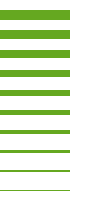https://doi.io-warnemuende.de/10.12754/data-2019-0005
doi:10.12754/data-2019-0005
© Author(s) 2019. This work is distributed
under "CC BY 4.0 License"
Benthos macrofauna data from 6 typical habitats of the SW Baltic Sea, MSM50
Contributor(s): Zettler, Michael L. [ProjectLeader]
Abstract. At 6 typical habitats of the SW Baltic Sea, macrozoobenthic samples were collected in January 2016 with Van Veen grab (sample area 0.1 m2, data is averaged per station based on 3 replicates at every station) and from short cores (sample area 0.00785 m2, data per core) after completing the pore-water analysis or incubation. Sediment was sieved using a 1.0 mm sieve mesh size and samples were preserved in 4% buffered formaldehyde–seawater solution. In the laboratory, the organisms were sorted, identified to species level, counted and weighted. The nomenclature was checked with World Register of Marine Species (WoRMS Editorial Board, 2018). Abundance and biomass data were standardized to an area of 1 m2. Ash-free dry weight (AFDW) biomass was estimated from the wet weight using species-specific conversion factors from the in-house list of the Leibniz Institute for Baltic Sea Research, Warnemünde. Environmental characteristics (including salinity, oxygen content, depth, sediment granulometry and organic content) were measured at each sampling event parallel to the collection of grab and cores samples. Data is explored in Gogina, M., Lipka, M., Woelfel, J., Liu, B., Morys, C., Böttcher, M.E., Zettler, M. L., 2018. In search of a field-based relationship between benthic macrofauna and biogeochemistry in a modern brackish coastal sea. Front. Mar. Sci. 5: 489, doi: 10.3389/fmars.2018.00489
Keywords: benthic macrofauna, ecosystem functioning, nutrient fluxes, sediment biogeochemistry, pore-water gradients, Baltic Sea, dataset
